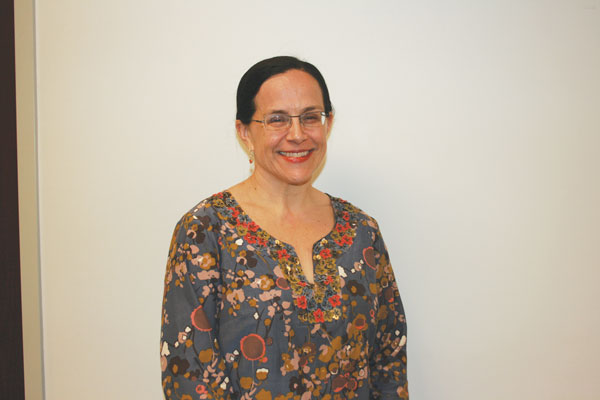 [/media-credit]
[/media-credit]
Last week, the city Department of Education announced plans to further expand the K-5 elementary school from 656 seats to 712 seats, allowing additional space for two more classrooms when the school moves to its permanent location at One Peck Slip. Community Education Council District Two also approved the D.O.E.’s third and final rezoning proposal on Dec. 14. The new zone will send Downtown students who live north of Liberty Street and Maiden Lane and south of the Brooklyn Bridge to the Peck Slip School.
And, at NYS Assembly Speaker Sheldon Silver’s School Overcrowding Task Force meeting on Monday, Dec. 19, the D.O.E. announced that Maggie Siena would be the new principal at Peck Slip. Currently Siena is principal at P.S. 150 and will remain there through this school year.
The expansion follows the D.O.E.’s promise made in November to expand the school from 476 seats to 656 seats and to build two extra floors in the One Peck Slip building. “After the Postal Service decided not to maintain use of a part of the building, we were able to add additional space to the new Peck Slip site,” said D.O.E. Spokesperson Frank Thomas.
A U.S.P.S. spokesperson confirmed the news and said that its retail and carrier operations are still slated to move to the John and Church Street locations in the coming months.
Silver said he was “delighted” over the news.
“For us, the more [seats], the merrier,” Silver said. “We need as many seats as we can get.”
While Siena said she didn’t know about staffing at the future school, she did impart information on the Peck Slip School’s curriculum, which will emphasize critical thinking and socio-emotional learning, among other core values of the neighboring public schools.
“I’m very excited about the prospect of working with my Downtown colleagues,” said Siena. “I’m pretty new to the East Side, so you’re going to have to shove me around a little bit,” she joked.
“You’re no stranger to the area,” replied Paul Hovitz, co-chair of Community Board 1’s Youth and Education Committee. “I think parents will be reassured… to know you’ll be in charge.”
Silver was equally happy with the D.O.E.’s appointment of Siena.
“It shows good faith by the D.O.E. at this early a stage to designate a principal who can be a spokesperson… and someone who can put the facilities in order,” said Silver.
Projections deemed insufficient
The Peck Slip School expansion is just a small piece of the larger puzzle to locate school seats for Downtown and district-wide children in their neighborhood. And, while the D.O.E. acknowledges the need for additional seats, it has yet to secure funding for many of them and to identify the need neighborhood by neighborhood.
Of the 3,846 seats funded by the D.O.E.’s 2010-2014 capital plan, 1,030 of these seats within District Two have not yet been sited, according to School Construction Authority Manager Michael Mirisola, who presented the numbers to the C.E.C. District Two Zoning Committee at the Dec. 14 meeting. An additional 778 district-wide seats have been neither sited nor funded, he said.
“We acknowledge the need, we just don’t have the dough,” said Mirisola. “I know that probably most of you will tell me what we’re doing is not enough… but, judging from what I’ve seen in other districts, it’s a lot.”
And while Mirisola and other D.O.E. officials have recently made note of the city’s gradual switch from district-wide seat projection analyses to sub-district analyses, the S.C.A.’s interpretation of the numbers is still not local enough, according to Eric Greenleaf, a business professor of New York University who has researched and documented the school overcrowding crisis in Downtown for years, and who serves on Silver’s overcrowding task force.
The current sub-districts, Greenleaf noted, lump Tribeca and the Financial District together with the West Village, and similarly merge Chinatown with the Lower East Side.
“They’re not even willing to recognize Downtown as a sub-district,” said Greenleaf. “You’re not going to find anybody who regards those as sensible neighborhoods.”
“The C.E.C. has been consistent that we need forecasting done at a more granular level,” echoed Michael Markowitz, chair of C.E.C. District Two’s zoning committee, noting that P.S. 3 in Greenwich Village, a one-time prospect for Tribeca students under a previous proposal, felt like “a whole world away” to their parents.


































